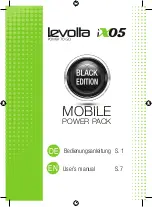
page 4
Removing paint and varnish using the hot air with a
paint scraper. (Fig. 3)
Removing labels and adhesive tape.
Loosening rusty or overtightened bolts and screws.
Thawing forzen pipes, locks etc.
Raising the grain of wood before varnishing or staining.
Drying paints and varnishes quickly. This is particularly
useful when the colour is being changed and several
coats of paint or varnish are necessary.
Drying damp and damaged wood before filling and
repainting.
Shrinking heat shrink film for packaging.
Wax modelling.
Heat shrinking.
Keep the air intake and hot air nozzle clean and free of
dust and debris.
Use only a damp cloth and ordinary household cleaners
for cleaning the heat gun.
Do not use white spirit, thinners, petrol or other similar
chemicals to clean the heat gun.
The sound pressure level in the working area may exceed
85dBA. The user should, therefore set up sound absorbing
materials and wear ear protection.
CAUTION-AUTO OFF THERMAL SWITCH
This unit is a thermostatically protected heat gun. If the unit
is operated for a prolonged period of time, the thermostat
may activate and cut off the power to protect the unit from
overheating. If this happens, turn off the switch immediately
and disconnect the unit from the power supply.
The thermostat will automatically reset after about 30 minutes,
or until the unit cools down and normal use can then be
resumed. Failure to follow this instruction may result in
damage to the machine and personal injury.
Do not use the heat gun to thaw pipes protected by a plastic
film.
STRIPPING PAINT AND VARNISH
The following procedure and techniques make it easier to
strip paint and varnish. Always test a small area of paint
before attempting to strip large areas.
Turn the heat gun on and allow it to warm up to operating
temperature. Position the nozzle 10cm from the paint to be
stripped. Soon, the paint should wrinkle and blisters start
to form. Do not overheat the paint as this may burn it and
make it more difficult to remove. Always wear eye protection
when stripping paint overhead.
Start by warming the surface just in front of the scraper
uniformly by moving the heat gun slightly from side to side.
If you heat the paint properly, you will be able to strip even
the thickest paint in one pass. The paint should come off in
strips the same width as the scraper.
Clean the scraper blade frequently to keep it clean and
sharp and to prevent a build-up of paint on the scraper.
Remove the paint while it is still soft, as it hardens rapidly.
You can strip moulded surfaces with a wire brush after
softening the paint with the hot air.
Protect surfaces that should not be heated using non-
flammable material. Avoid directing the heat from the heat
gun onto windows or other glass surfaces.
NB:
The heat gun is designed to strip both oil and water
based paints and varnishes. The heat gun cannot remove
wood stains or primers impregnating the wood.
WARNING:
FUMES FROM LEAD-BASED PAINT ARE
HIGHLY TOXIC. ALWAYS PROVIDE ADEQUATE
VENTILATION WHILE WORKING INDOORS.
OTHER USES FOR THE HEAT GUN
CARE OF YOUR HEAT GUN
NOISE
























